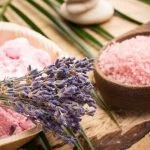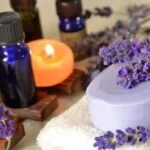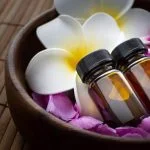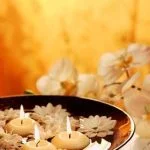Are you interested in learning how to make homemade aromatherapy fragrances? Aromatherapy has been used for centuries as a holistic healing treatment, and creating your own custom fragrances can be a fulfilling and therapeutic experience. In this article, we will explore the benefits of aromatherapy fragrances and provide a guide on how to make your own blends at home.
Aromatherapy fragrances are known for their ability to promote relaxation, reduce stress, improve mood, and even alleviate certain physical ailments. By harnessing the power of scent, you can create personalized aromatherapy blends that cater to your individual needs and preferences. Whether you’re new to aromatherapy or an experienced enthusiast, making homemade fragrances allows you to fully customize the scents that surround you.
Understanding the basics of essential oils and carrier oils is essential for creating effective aromatherapy blends. We will delve into the different types of oils used in aromatherapy, as well as the properties and benefits of each.
Additionally, we will discuss the art of choosing the right aromas for your homemade fragrances and provide tips on mixing and blending your own signature blend. With this comprehensive guide, you’ll be equipped with the knowledge and skills to embark on your own aromatherapy fragrance-making journey.
Understanding the Basics
What Are Essential Oils?
Essential oils are concentrated liquids that contain volatile aroma compounds from plants. These oils are extracted through various methods such as steam distillation, cold pressing, or solvent extraction. They are highly aromatic and have been used for centuries for their therapeutic properties in aromatherapy. When making homemade aromatherapy fragrances, it is important to understand the different types of essential oils available and their unique benefits.
Choosing the Right Carrier Oils
Carrier oils are used to dilute essential oils before applying them to the skin in aromatherapy practices. They are derived from the fatty portion of a plant, usually from the seeds, kernels or nuts. Common carrier oils include jojoba oil, almond oil, coconut oil, and olive oil. When making homemade aromatherapy fragrances, it’s essential to use carrier oils that complement the chosen essential oils while also providing nourishment and moisturization to the skin.
The Importance of Quality
When creating your own aromatherapy fragrances, it’s crucial to use high-quality essential and carrier oils. Poor quality oils may not only produce a less desirable scent but could also result in a less effective product overall. Research different suppliers and look for organic and pure options when selecting your ingredients for homemade aromatherapy fragrances. Understanding how to make homemade aromatherapy fragrances means knowing which quality of ingredients will provide the best results in both scent and therapeutic benefits.
The Power of Scent
When it comes to making homemade aromatherapy fragrances, choosing the right aromas is essential in creating a blend that will provide the desired therapeutic effects. Essential oils are the foundation of aromatherapy fragrances, and each one has its own unique properties and benefits. Understanding the different scents and their effects is crucial in creating a well-balanced and effective fragrance blend.
Understanding Scent Categories
There are several categories of scent in aromatherapy, including floral, citrus, herbal, spicy, woody, and earthy. Each category has its own unique aroma profile and therapeutic benefits. For example, floral scents like lavender and rose are known for their calming and relaxing properties, while citrus scents like lemon and orange are uplifting and invigorating. By understanding these scent categories, you can choose the right aromas to achieve specific therapeutic goals.
Creating Synergy With Aromas
In addition to understanding individual scents, it’s also important to consider how different aromas interact with one another. Some scents complement each other well and can create a synergistic effect when blended together. For example, combining lavender with chamomile can enhance the calming properties of both oils.
On the other hand, some scents may not pair as effectively together due to their contrasting properties. By understanding how different aromas interact with one another, you can create harmonious blends that maximize the therapeutic benefits of each oil.
Personal Preferences and Intuition
While understanding scent categories and interactions is important, personal preference also plays a significant role in choosing the right aromas for your homemade aromatherapy fragrances. Trusting your intuition and selecting scents that resonate with you personally can result in a fragrance blend that feels particularly soothing or uplifting to you. Experimenting with different combinations of essential oils can help you discover unique blends that cater to your individual olfactory preferences.
Tools of the Trade
When it comes to making homemade aromatherapy fragrances, having the right tools and supplies is essential to creating a high-quality product. The first step in gathering supplies for your homemade aromatherapy fragrances is to invest in high-quality essential oils. Essential oils are the foundation of any aromatherapy blend, so it’s important to choose pure, therapeutic-grade oils from reputable suppliers. Some popular essential oils for aromatherapy include lavender, peppermint, eucalyptus, and citrus oils like orange or lemon.
In addition to essential oils, you will also need carrier oils to dilute the potency of the essential oils and make them safe for topical application. Popular carrier oils include jojoba oil, sweet almond oil, and coconut oil. These carrier oils not only dilute the essential oils but also help nourish the skin when used in aromatherapy applications.
When gathering supplies for homemade aromatherapy fragrances, don’t forget about accessories such as amber glass bottles for storing your blends, labels for identifying your creations, and dropper tops for easy dispensing of the fragrance. By investing in quality supplies and tools for your homemade aromatherapy fragrances, you can ensure that you are creating safe and effective products that deliver all the benefits of aromatherapy without any compromise on quality.
As you explore how to make homemade aromatherapy fragrances, take the time to research and gather all the necessary tools and supplies before diving into creating your own custom blends. With the right supplies on hand, you’ll be well-equipped to embark on a journey of scent exploration and create bespoke fragrances that cater to your specific needs and preferences.
Getting Creative
Creating your own homemade aromatherapy fragrances can be a fun and rewarding experience. With the right combination of essential oils and carrier oils, you can customize scents to suit your individual needs and preferences. Whether you’re looking to relax, uplift your mood, or alleviate stress, there are countless possibilities for creating unique aromatherapy blends at home.
To get started on making your own DIY aromatherapy fragrance recipes, it’s important to gather the necessary supplies. Here are some basic items you’ll need:
- Essential oils of your choice
- Carrier oils, such as jojoba oil or sweet almond oil
- Glass dropper bottles for storing your homemade blends
- A small funnel for transferring the oils into the bottles
- Labels to keep track of your different creations
Once you have all the tools and ingredients ready, it’s time to start experimenting with different scent combinations. Lavender, peppermint, lemon, and eucalyptus are just a few examples of popular essential oils that can be used in aromatherapy blends. Depending on the desired effect, you can mix and match different scents to create a customized fragrance that suits your needs.
Mixing Aromatherapy Blends
When combining essential oils for a homemade aromatherapy fragrance recipe, it’s important to dilute them with a carrier oil to ensure safe use. Here’s a simple recipe to get you started:
- Choose two or three essential oils that complement each other in terms of scent and therapeutic properties.
- Add a total of 10-15 drops of essential oil to every 30ml (1 ounce) of carrier oil.
- Experiment with different ratios and combinations until you find a blend that resonates with you.
By following these steps and experimenting with different scent combinations, you can create your own signature aromatherapy fragrance blends that cater to your specific needs and preferences. With patience and creativity, you’ll soon have an array of homemade fragrances at your fingertips for use in diffusers, roll-ons, or sprays.
Mixing and Blending
Creating your own signature aromatherapy blend can be a fun and rewarding experience. Whether you are looking to uplift your mood, relax after a long day, or simply freshen up your living space, blending your own aromatherapy fragrance allows you to customize the scent to fit your specific needs. In this section, we will explore how to make homemade aromatherapy fragrances by mixing and blending essential oils and carrier oils.
To create your own signature aromatherapy blend, it is important to understand the properties of different essential oils and how they can work together to create a harmonious aroma. Essential oils are highly concentrated plant extracts that are known for their therapeutic properties. When combined with carrier oils, which help dilute the essential oils for safe use on the skin, you can create a balanced and safe fragrance blend.
When choosing essential oils for your homemade aromatherapy fragrance, consider the therapeutic benefits of each oil and how they complement each other. For example, lavender is known for its calming properties, while citrus oils like lemon or sweet orange can provide an uplifting and energizing effect. By understanding the properties of different essential oils, you can create a well-balanced blend that suits your specific needs.
Once you have selected your essential oils, it’s time to start blending. Start by combining the chosen essential oils with a carrier oil such as jojoba oil or sweet almond oil in a small glass bottle. Use a dropper to add the essential oils drop by drop, carefully noting the number of drops used for each oil.
This will allow you to adjust the ratios until you achieve the desired aroma. Experimenting with different combinations and ratios is part of the fun of creating your own unique fragrance blend.
Homemade Aromatherapy Fragrance Application
Making your own homemade aromatherapy fragrances is a wonderful way to bring the benefits of essential oils into your home. Once you have created your unique blend, the next step is to decide how you want to enjoy and apply it. There are several different methods for applying homemade aromatherapy fragrances, each with its own unique benefits.
Diffusers
Using a diffuser is a popular way to disperse the scent of your homemade aromatherapy fragrance throughout a room. There are several types of diffusers available, including ultrasonic, nebulizing, and heat diffusers. Simply add a few drops of your custom blend to water in the diffuser, and enjoy the calming and uplifting aroma as it fills the air.
Roll-Ons
Creating roll-on aromatherapy fragrances allows you to take your custom blend with you on the go. To make a roll-on fragrance, mix your essential oil blend with a carrier oil such as jojoba or fractionated coconut oil, and then transfer it to a roller bottle. This method allows for easy application to pulse points, wrists, or temples.
Sprays
Homemade aromatherapy sprays are another great way to enjoy your custom fragrance blend. Simply mix your essential oil blend with water in a spray bottle and shake well before each use. You can use these sprays as room fresheners, linen sprays, or even as a natural body mist.
By experimenting with different application methods for your homemade aromatherapy fragrances, you can find the most convenient and enjoyable way to incorporate them into your daily routine. Whether using a diffuser at home, rolling on fragrance during the day, or spritzing with a DIY spray, there are countless ways to experience the benefits of aromatherapy through your custom blends.
Tips for Storing and Preserving Homemade Aromatherapy Fragrances
Storing and preserving your homemade aromatherapy fragrances is essential to ensure that they maintain their potency and effectiveness over time. Proper storage can also prevent the oils from oxidizing or becoming rancid, ultimately extending the shelf life of your homemade creations. Here are some tips for storing and preserving your homemade aromatherapy fragrances:
First, it’s important to keep your homemade aromatherapy fragrances in a cool, dark place away from direct sunlight and heat. Essential oils are sensitive to light and temperature, so storing them in a dark, cool cabinet or drawer will help prolong their shelf life.
Additionally, make sure to store your homemade aromatherapy fragrances in tightly-sealed, dark glass bottles to protect them from air and light exposure. Amber or cobalt blue glass bottles are popular choices for storing essential oils as they offer protection from damaging UV rays.
When it comes to preserving the potency of your homemade aromatherapy fragrances, adding a few drops of vitamin E oil to each bottle can help prevent oxidation and extend the shelf life of the essential oils. Vitamin E is a natural antioxidant that can help maintain the freshness of the oils.
By following these tips for storing and preserving your homemade aromatherapy fragrances, you can ensure that they stay potent and effective for longer periods of time. Proper storage and preservation techniques will not only maintain the quality of your custom blends but also allow you to enjoy the benefits of aromatherapy for an extended period.
Conclusion
In conclusion, making homemade aromatherapy fragrances is a wonderful way to personalize your self-care routine and explore the benefits of aromatherapy. By understanding the basics of essential and carrier oils and choosing the right aromas for your blends, you can create unique scents tailored to your preferences and needs. The art of mixing and blending allows you to craft your own signature fragrance that resonates with your senses and promotes relaxation, focus, or energy as desired.
The process of creating DIY aromatherapy fragrances is not only enjoyable but also empowering. With a few supplies and some creativity, you can experiment with different recipes and application methods such as diffusers, roll-ons, and sprays. Additionally, learning how to properly store and preserve your homemade fragrances will ensure their longevity and effectiveness.
Overall, embracing the art of aromatherapy with your own custom fragrances opens up a world of possibilities for enhancing your well-being. Whether you seek calmness, mental clarity, or an invigorating boost, the ability to craft personalized aromatherapy blends puts the power of scent in your hands. So why not start exploring the world of homemade aromatherapy fragrances today?
Frequently Asked Questions
How Do You Make Aromatherapy Perfume at Home?
Making aromatherapy perfume at home is a simple process that involves combining essential oils with a carrier oil, such as jojoba or almond oil. You can customize your scent by selecting specific essential oils known for their therapeutic benefits.
Can You Make Your Own Aromatherapy Oils?
Yes, you can make your own aromatherapy oils by infusing a carrier oil with dried herbs, flowers, or other botanicals. This process usually requires heating the carrier oil and adding the desired plant materials, then allowing it to steep for several weeks before straining the infused oil.
How Can I Make My Own Fragrance Oils?
Making your own fragrance oils can be done by combining essential oils with a neutral-smelling carrier oil, such as fractionated coconut oil or grapeseed oil. By carefully selecting and blending different essential oils, you can create unique and customized fragrance oils tailored to your preferences and needs.

Are you looking for a natural way to improve your health and wellbeing?
If so, aromatherapy may be the answer for you.





